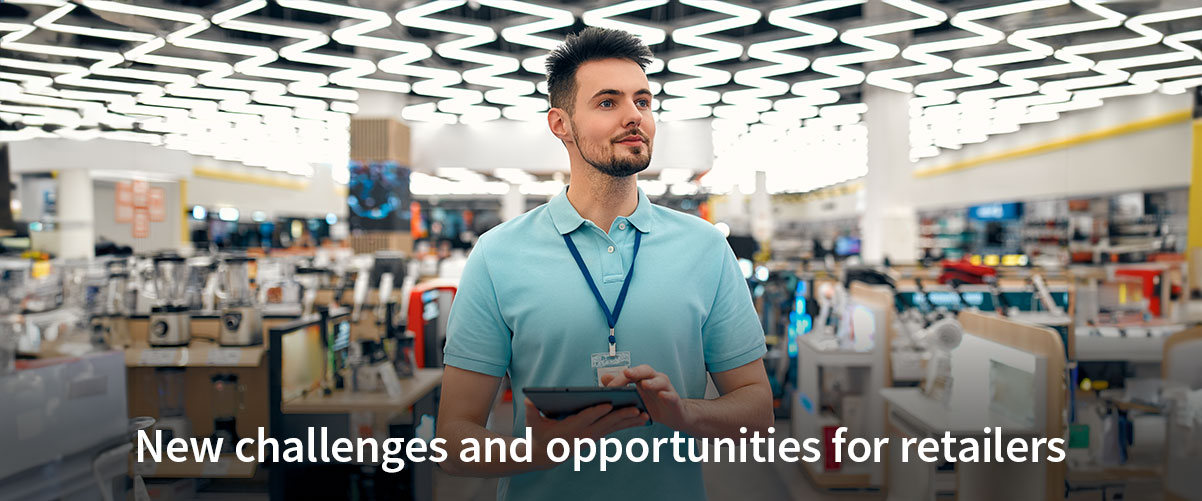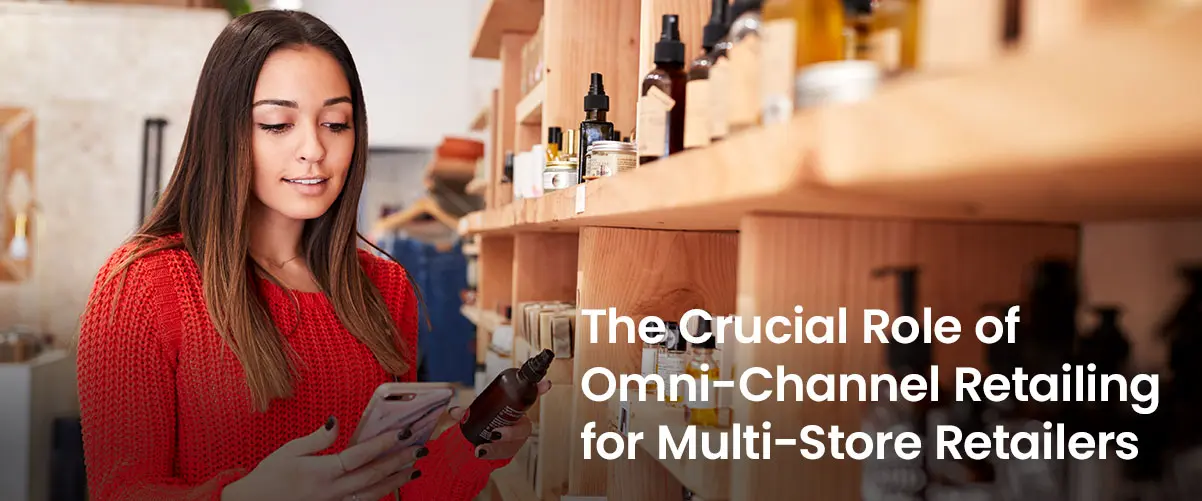
The retail industry is standing at a crossroads, facing a perfect storm of disruptive forces. Consumer expectations are evolving at a rapid pace, driven by digital natives and changing lifestyles. Simultaneously, technological advancements are reshaping how retailers operate, from supply chain management to customer engagement. And, to top it off, a complex web of tax and regulatory changes is adding to the challenges faced by businesses.
In this blog post, we’ll delve into these three interdependent forces and explore how they are shaping the future of retail. By understanding these trends, retailers can anticipate challenges, identify opportunities, and position themselves for long-term success in a rapidly changing market.
1. Evolving Consumer Behaviors
Consumers are becoming increasingly demanding, seeking personalized experiences, ethical and sustainable products, and convenient shopping options. Key trends driving this evolution include:
- Mass personalization: Consumers expect products and services tailored to their individual needs and preferences.
- Private label vs D2C: The rise of private label brands and direct-to-consumer (D2C) models is challenging traditional retail.
- Conscious consumption: Consumers are becoming more aware of the environmental and social impact of their purchases and are seeking sustainable and ethical options.
- Healthy, plant-based: Demand for healthier and plant-based products is on the rise, driven by health and wellness trends.
- Subscribing & renting: Subscription models and rental services are gaining popularity as consumers seek flexibility and convenience.
38% of consumers are buying fewer physical products
Imperatives for Retailers
To adapt to these evolving consumer behaviors, retailers must:
- Tailor products in-store to meet individual preferences.
- Adapt stores to accommodate new needs, such as click-and-collect and in-store experiences.
- Innovate to meet emerging trends and anticipate future consumer demands.
- Apply new business models, such as subscription services and rental options.
- Develop service-led solutions to enhance the customer experience.
- Target emerging segments, such as Gen Z and millennials.
- Create experiential offerings to differentiate from competitors.
- Develop private label lines to offer unique and affordable products.
- Build consumer trust by prioritizing sustainability, ethical sourcing, and transparency.
- Adopt circular economy practices, such as reselling, reusing, and recycling.
2. Rapidly Changing Technologies
Technological advancements are disrupting the retail industry, providing new opportunities for innovation and efficiency. Key trends include:
- Digital engagement: Consumers are increasingly using digital channels to research and purchase products.
- Blockchain and crypto: Blockchain technology is enabling new business models and enhancing supply chain transparency.
- 3D printing: 3D printing is revolutionizing product design and manufacturing.
- Digital goods and services: The demand for digital products and services is growing rapidly.
- The emerging Metaverse: The Metaverse offers new opportunities for virtual shopping experiences and social interactions.
- AR and VR adoption: Augmented reality (AR) and virtual reality (VR) are enhancing the customer experience.
- Generative AI: AI-powered tools can be used to create personalized content and product recommendations.
- 5G, IoT, Cloud and Edge: These technologies are enabling new applications and improving connectivity.
- Quantum computing: Quantum computing has the potential to revolutionize data analysis and problem-solving.
48% of consumers expect their technology use to improve in future
Imperatives for Retailers
To leverage these technologies, retailers must:
- Apply data and analytics insights to understand consumer behavior and optimize operations.
- Invest in customer experience to create engaging and personalized interactions.
- Create digital-first products and services to meet the evolving needs of consumers.
- Build supplier transparency and accountability using blockchain technology.
- Develop integrated systems to streamline operations and improve efficiency.
- Prioritize cybersecurity to protect customer data and prevent fraud.
- Upgrade tech infrastructure to support new technologies and applications.
- Integrate AI into the enterprise to automate tasks and improve decision-making.
- Automate processes to improve efficiency and reduce costs.
3. Increasing Tax & Regulatory Complexity
The regulatory landscape is becoming increasingly complex, with new taxes, regulations, and standards emerging at a rapid pace. Key trends include:
- Carbon/plastic taxes: Governments are implementing taxes on carbon emissions and plastic use to promote sustainability.
- Product governance: Regulations are tightening around product safety, quality, and ethical sourcing.
- Unhealthy ingredient bans: Governments are banning harmful ingredients from products to protect public health.
- EPR regulation: Extended producer responsibility (EPR) regulations are requiring manufacturers to take responsibility for the end-of-life of their products.
- Extended sin taxes: Taxes on unhealthy products, such as tobacco and alcohol, are increasing.
- Intellectual Property: Protecting intellectual property is becoming increasingly important.
- Labelling requirements: New labelling requirements are being introduced to provide consumers with more information about products.
- Labor and wage laws: Labor and wage regulations are evolving to protect workers’ rights.
- Data protection: Data privacy regulations are becoming more stringent.
48% of consumers assume products that are bad for people or the planet would be banned
Imperatives for Retailers
To navigate this complex regulatory environment, retailers must:
- Plan for regulatory scenarios and adapt their strategies accordingly.
- Optimize their tax and wage footprint to minimize costs.
- Build supplier accountability to ensure compliance with regulations.
- Set global and local norms to promote ethical and sustainable practices.
- Manage data across borders to comply with data privacy regulations.
- Meet new labelling demands to provide accurate and transparent information to consumers.
- Improve reporting metrics to track performance and identify areas for improvement.
- Monitor employee well-being and ensure compliance with labor and wage laws.
- Actively engage with policymakers to influence regulatory decisions.
The retail industry is facing unprecedented challenges and opportunities due to the convergence of evolving consumer behaviors, rapidly changing technologies, and increasing tax & regulatory complexity. Retailers that can successfully navigate these disruptive forces will be well-positioned for long-term success. By understanding these trends and implementing appropriate strategies, retailers can adapt to the changing landscape and thrive in the future.
Stay tuned for Part 2 of “6 Disruptive Forces that are Creating New Challenges and Opportunities for Retailers,” where we’ll delve into sustainability, political & economic uncertainty, and boundaries between sectors and channels.


